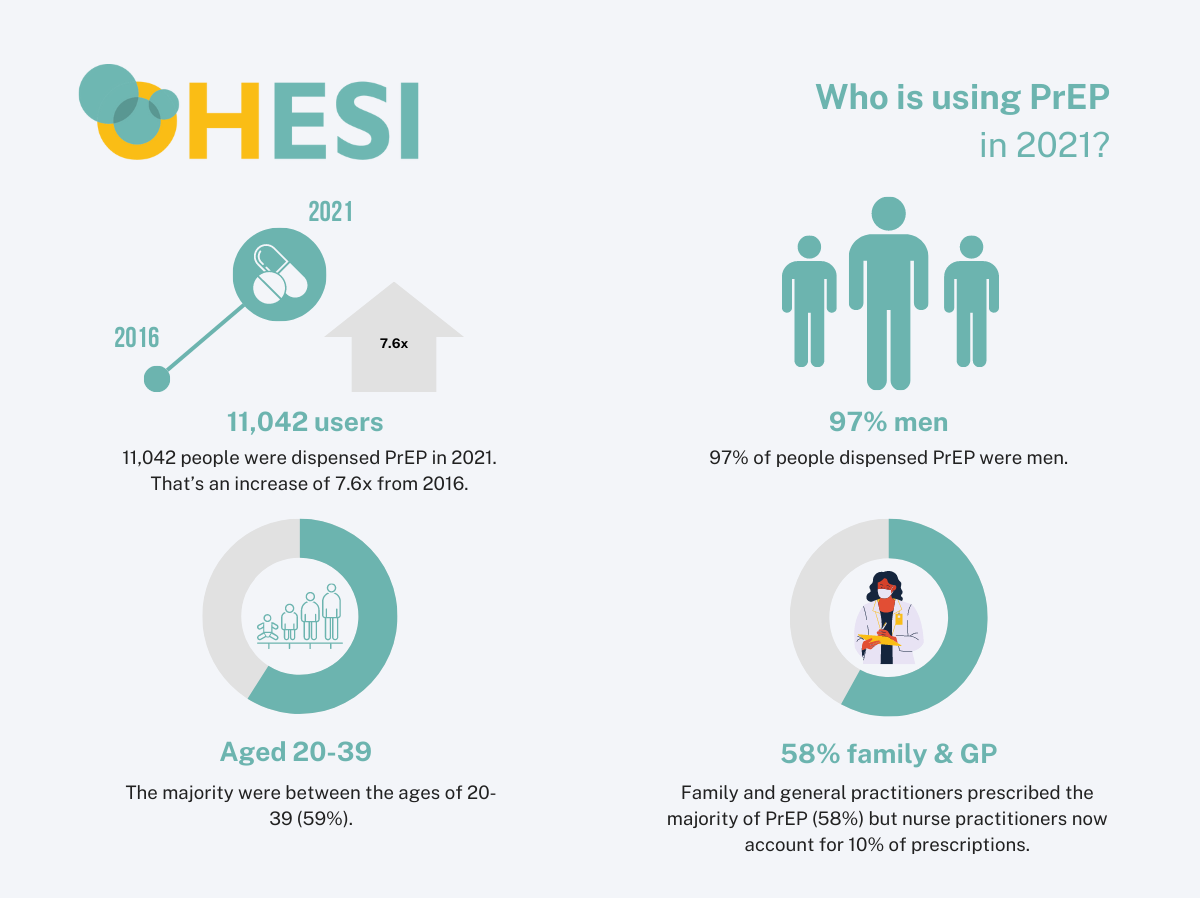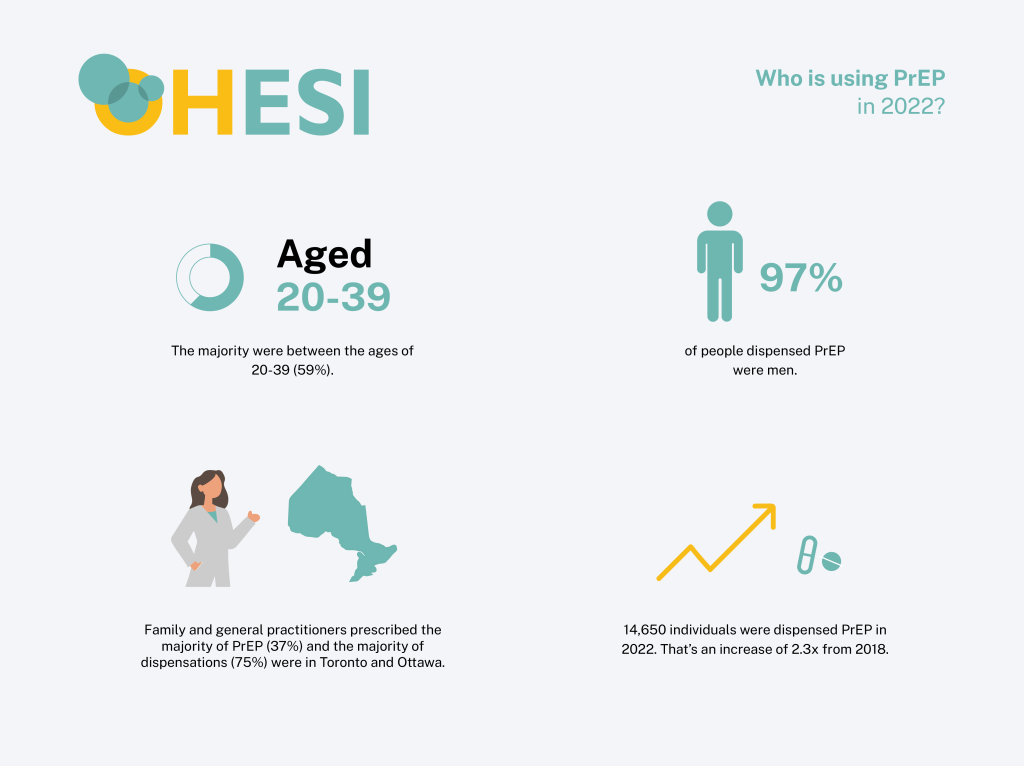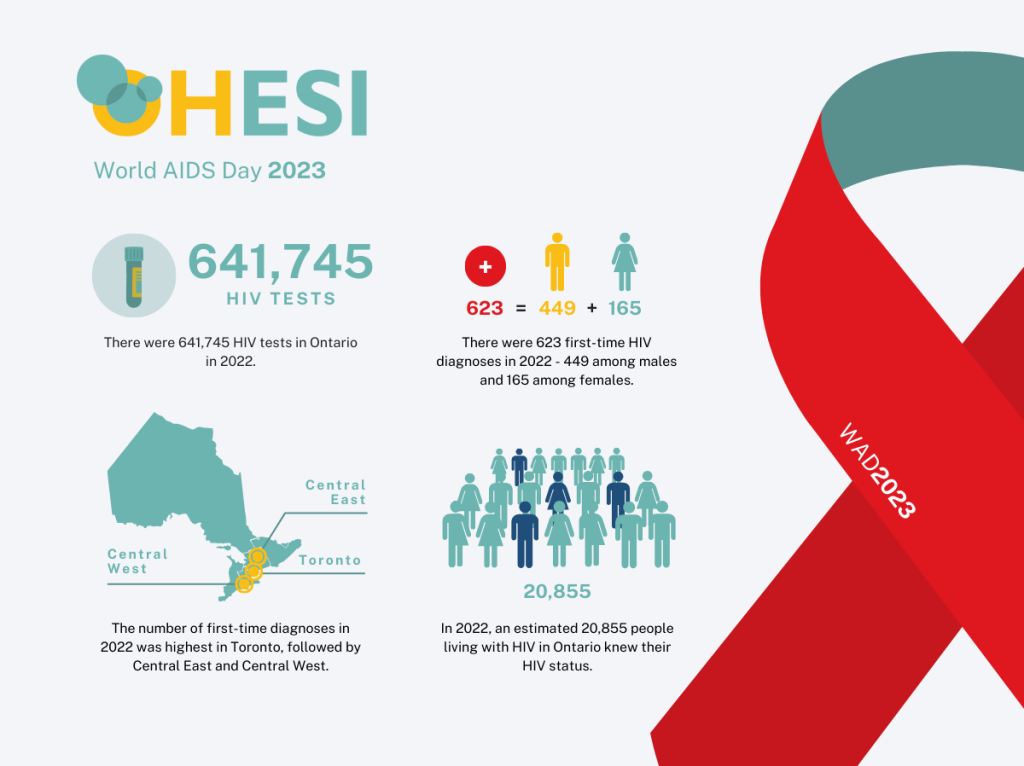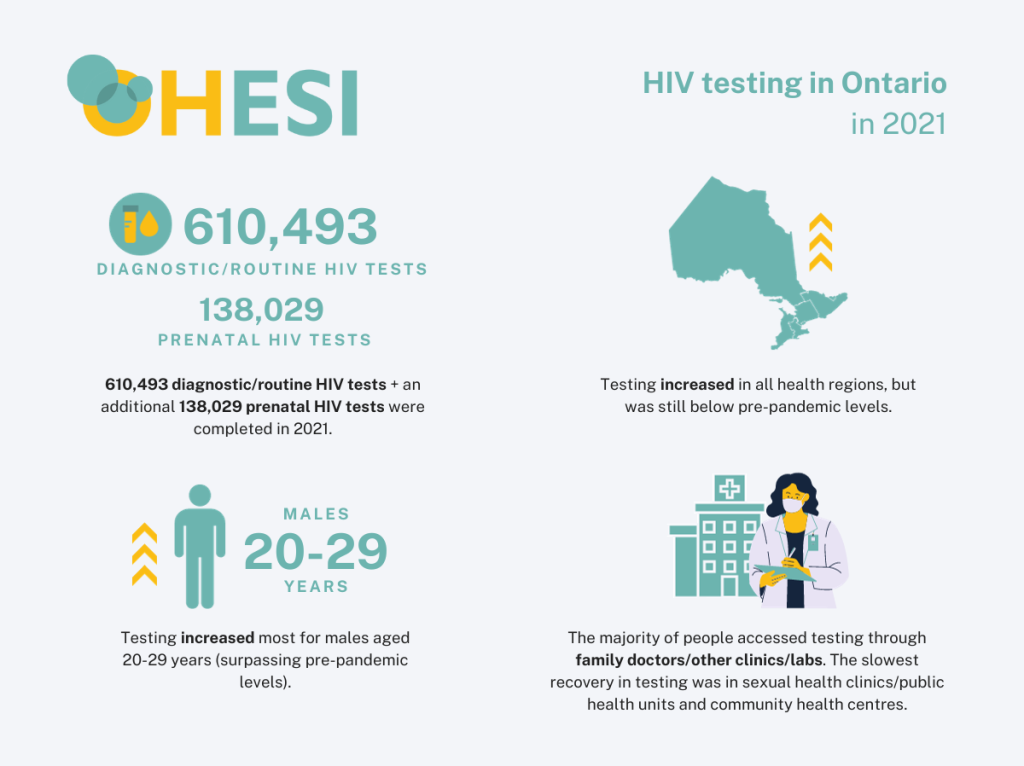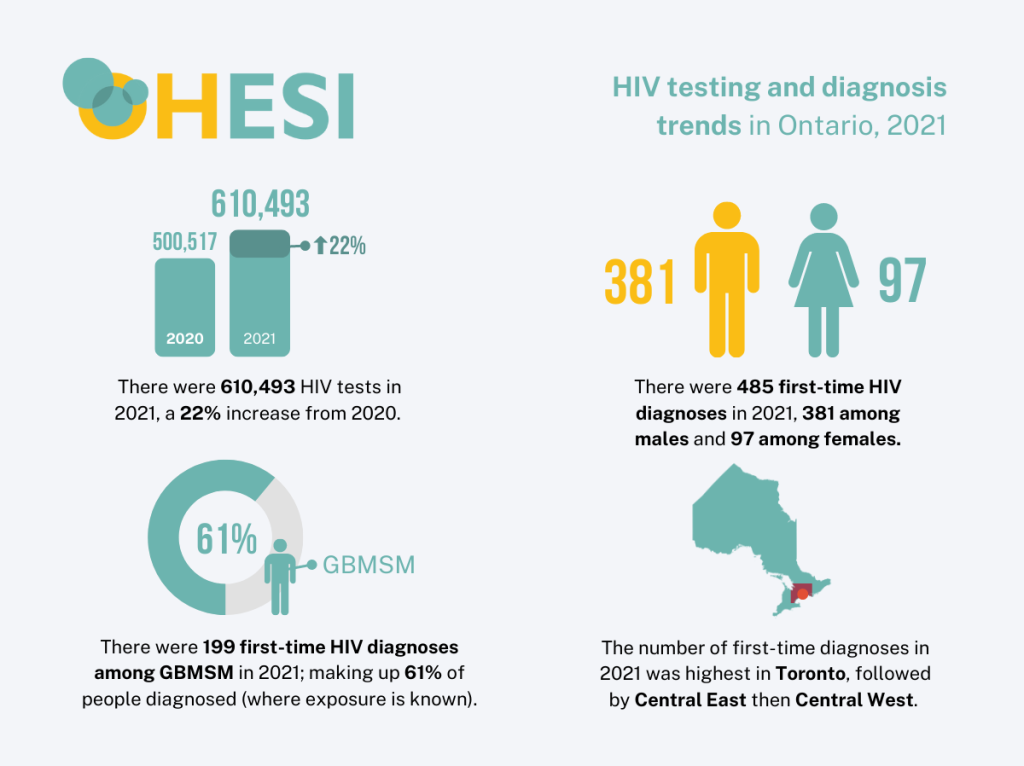Apr 11th, 2023
HIV pre-exposure prophylaxis (PrEP) in Ontario, 2021
HIV pre-exposure prophylaxis (PrEP) is the use of antiretroviral medication on an ongoing basis to reduce one’s risk of acquiring HIV infection. When taken consistently and correctly, PrEP is a highly effective HIV-risk reduction strategy and a critical part of comprehensive HIV prevention. To ensure that everyone who could benefit from PrEP has access to it, it is important to monitor PrEP uptake.
PrEP is recommended for adults who are at risk for acquiring HIV infection through sexual activity or injection drug use. This includes:
- Men who have sex with men (MSM) and transgender women who report condomless anal sex in the last six months who also have at least one other risk factors such as a recent STI, repeated use of post-exposure prophylaxis (PEP), an HIV-positive partner with substantial risk of transmissible HIV or a score of ≥11 on the High-Incidence Risk Index (HIRI)-MSM risk score;
- The HIV-negative partner in heterosexual serodiscordant relationships reporting condomless vaginal or anal sex where the HIV-positive partner is at substantial risk of transmissible HIV;
- People who inject drugs if they share injection drug use paraphernalia with a person with a non-negligible risk of HIV infection.
Ontario does not currently have a provincial monitoring system for PrEP; the OHTN is able to use pharmacy data on PrEP dispensations to understand PrEP uptake in Ontario between 2016 and 2021. However, there are some important limitations to this data and the ability to asses PrEP uptake. While the data includes some demographic features recorded by the pharmacy, such as age, sex, payer type and geographic location of the pharmacy, there is no information recorded on some very important characteristics (such as race/ethnicity, gender identity, and HIV risk factors). As PrEP uptake should be considered relative to those populations where PrEP is indicated, these data are not adequate to determine whether PrEP uptake has met the need of the key populations at risk for HIV. It is difficult to assess successful PrEP uptake in women and more research is needed to guide its appropriate use. Women who face systemic and social inequities, who are more likely to be exposed to HIV through a sexual or drug using partner require more direct and focused outreach to assess PrEP appropriateness and uptake.
Knowledge of, awareness of, access to, and targeted uptake campaigns of PrEP are not equal across sociodemographic groups. To understand the adequacy of PrEP uptake and the equity of distribution will require new data and novel research, supported by community input and guidance.
The projected provincial-level estimates of PrEP uptake are based on tenofovir disoproxil fumerate-emtricitabine (TDF/FTC; trade name Truvada (also available in Canada as generics) or tenofovir alafenamide-emtricitabine (TAF/FTC; trade name Descovy) dispensation data from close to 2,300 pharmacies across Ontario provided by IQVIA1. The report describes the projected provincial-level estimated number, proportion or rate of unique individuals dispensed PrEP (known here as “PrEP users”) and describes them overall, by sex, age, prescriber specialty, payer type, region, and as a ratio to the number of first-time HIV diagnoses (“PrEP-to-need ratio”).
For more information about the blogpost or report, email [email protected]. To learn more about PrEP and how to access it regardless of drug coverage, visit www.ontarioprep.ca.
Some key findings:
PrEP use continues to increase
The estimated number individuals dispensed PrEP at least once in a calendar period in Ontario increased dramatically – (7.6 times) between 2016 and 2021.
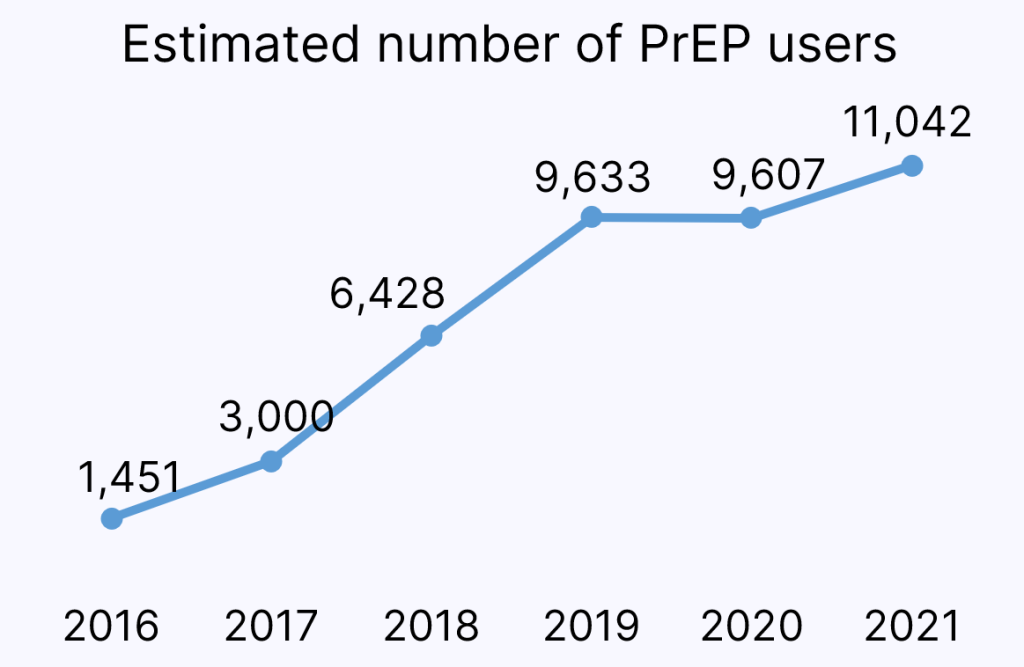
Most PrEP users are men

Since HIV disproportionately affects gay, bisexual and other men who have sex with men who meet high risk criteria, it is expected that the majority of appropriateness, and hence PrEP users are male (>97%), and its use has increased faster in males.
Most PrEP users are people between the ages of 20 and 39
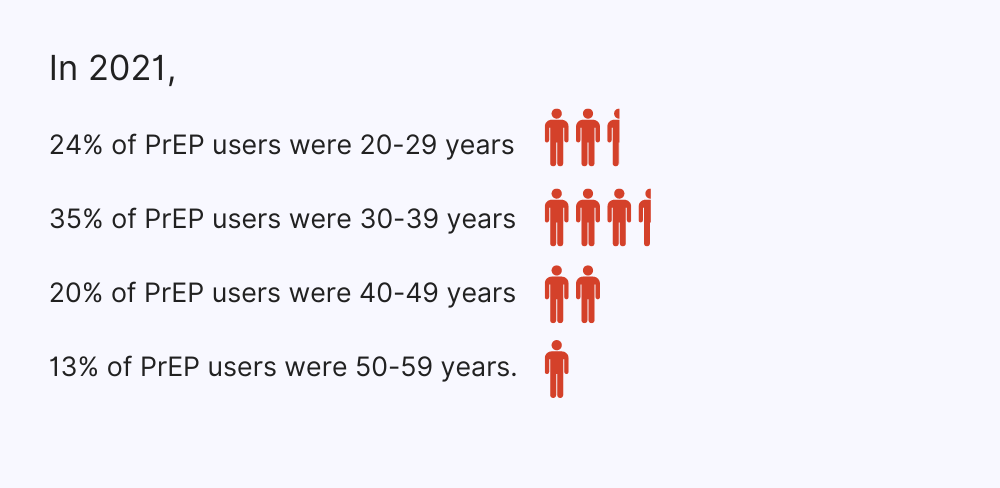
People mainly get PrEP from their family doctors and use private insurance to pay for it
In 2021,
58%
of the estimated PrEP users were prescribed PrEP by a family or general practitioner.
75%
of the estimated PrEP users covered the cost of the prescription through their private health insurance.

Nurse practitioners are the fastest growing group of PrEP prescribers. They accounted for almost 1 in 10 PrEP prescriptions in 2021, an increase of more than 14 times compared to 2018 (1 in 140 PrEP prescriptions).
PrEP use up in all regions in Ontario
Between 2016 and 2021, the number of PrEP users increased in all regions in Ontario.
Most notably, the greatest relative increases of PrEP dispensations between 2016 and 2021 were in the Durham (15 times), Erie-St. Clair (15 times), Peel (14 times), Central East (14 times) and Eastern (14 times) regions.
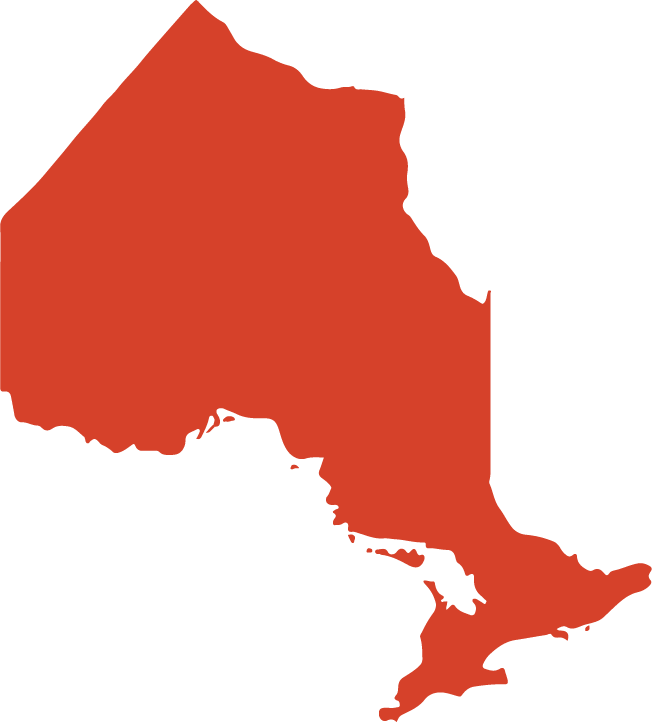
Most PrEP users are dispensed PrEP in Toronto and Ottawa

Toronto and Ottawa continue to have the largest number of individuals dispensed PrEP. Although they make up 52% of Ontario’s population, together they account for over 3 in 4 PrEP dispensations (77.3%) in 2021. The concentration of PrEP users in these regions may be explained by Toronto and Ottawa having disproportionately more gay, bisexual, and other men who have sex with men (GBMSM) who are eligible for PrEP, physicians and/or clinics that have more experience assessing PrEP appropriateness and/or individuals traveling into these cities to obtain PrEP.
PrEP-to-need ratio

PrEP use alone does not inform whether or not the PrEP uptake is meeting the needs of the province and communities. It is necessary to evaluate PrEP uptake relative to HIV risk. First-time diagnoses are a proxy for HIV infection and the risk experienced by the community. Therefore, we examine PrEP use relative to first-time diagnoses, known as the “PrEP-to-need” ratio. The higher the ratio, the closer PrEP use is to meeting need. We can compare across groups and geographies to understand PrEP uptake relative to need.
However, there are limitations to the interpretation of the PrEP-to-need ratio. First, there is no known cut-off where we can say PrEP use has met some optimal level of HIV prevention and indicates an ideal level of PrEP coverage. Second, it doesn’t asses PrEP appropriateness or eligibility– that is, are people taking PrEP when indicated by clinical guidelines. As we don’t have access to risk information, we compare between females and males, without knowledge of the risk factors of PrEP users. Based on insight from community and clinicians, we believe that a large percentage of male PrEP users are gay, bisexual and men who have sex with men. These data do not provide adequate insight on whether PrEP uptake is meeting the needs of other populations at risk for HIV, including heterosexual males and females and people who use drugs.
PrEP use is increasing relative to those who need it in some Ontario regions

Over time, the PrEP-to-need ratio:
- Has increased for both males and females
- Was higher for males (28.1 in 2021) than for females (3.0 in 2021) but was increasing at a similar pace between 2018 and 2021
- Increased across most health regions and was highest in Toronto and Ottawa in 2021.
Much more information is provided in the full report.
Footnotes
- IQVIA, formerly Quintiles and IMS Health, Inc., is an American multinational company serving the combined industries of health information technology and clinical research

